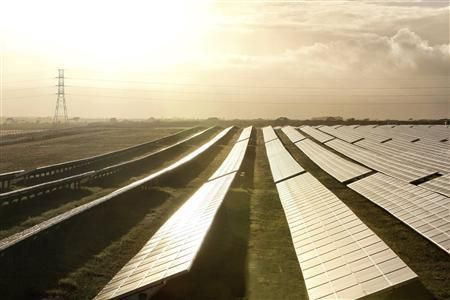Renewable Technologies Projected To Translate To A $5 Trillion Opportunity

A new report showed that renewable technologies are projected to be responsible for 60 percent of new electricity generated worldwide by 2030 that could translate to a $5 trillion opportunity, according to the findings contained in the report "Power Shift: Emerging Clean Energy Markets."
The findings contained in the report showed that developing countries are actually switching and making investments in clean energy technologies. The report was commissioned by PEW, an independent non-profit, non-governmental organization. It contains information on countries betting on clean energy investment.
Developed countries like China, the United States, the European Union, Japan, India and Brazil has made up the bulk of clean energy investments, but the new report showed that developing nations are also putting their money on clean energy.
From the period of 2009 to 2013, 100 countries that are not part of the G-20 have pulled in $62 billion worth of clean energy investment. The research stated, however, that developing nations are focusing on a cleaner source of energy and that the market is no longer dominated by developed countries.
“Developing countries are prioritizing solar, wind, and other renewable energy sources in order to reduce energy poverty, power economic progress, enhance national security by reducing imports, and protect the environment," said Phyllis Cuttino, director of Pew’s clean energy initiative, quoted an article on Market Watch.
The report stated that the 10 emerging markets are Thailand; Bulgaria; Ukraine; Kenya; Peru; Taiwan, Province of China; Morocco; Vietnam; Pakistan; and the Philippines. Each added some type of renewable technology to its generating fleet between 2009 and 2013.
The research further found that in developing countries in South America, Africa and Southeast Asia, investment in clean energy technologies such as solar panels and wind turbines has grown faster than conventional technologies. Those developing countries will account for two-thirds of energy demand growth by 2030 and that emerging markets represent an important opportunity for American clean energy technologies and services.
Findings also showed that overall, solar has attracted the most investment in the top-10 emerging markets, with $12 billion invested over the five-year period.
"A clear take-away from our research is that emerging markets have the potential to be important export opportunities for clean energy technologies from the United States," Cuttino added. "With demand growing in coming years and decades, the United States should enhance its clean energy competitiveness and seize this new trade potential. Consistent policy prioritizing the innovation and deployment of renewable is essential."
Within the renewable energy category, solar grew the most across the top 10 nations. Together, six countries added 3 GW of solar generation from 2009 to 2013. Bulgaria (955 MW), Thailand (808 MW) and Ukraine (780MW) accounted for the bulk of these additions.
Overall, solar has attracted the most investment in the top-10 emerging markets, with $12 billion invested over the five-year period. Since more countries prefer solar as a renewable energy option, there is also a growing clamor for titanium dioxide market.
According to a separate research, titanium dioxide has photocatalytic properties which are quite effective in solar panel applications.
Because investments in titanium dioxide are expanding, mining companies all over the world are sprouting and are making a name for themselves, and one of them is White Mountain Titanium Corporation (OTCQB:WMTM)). The company's goal is to become one of the important players in the titanium dioxide market by aiming to be one of Chile’s leading titanium dioxide sources in the foreseeable future. White Mountain Titanium is located in Santiago, Chile, and is banking on the potential of its Cerro Blanco project, which is expected to produce 112 million tonnes of rutile.
To contact the writer, email: vittoriohernandez@yahoo.com




















